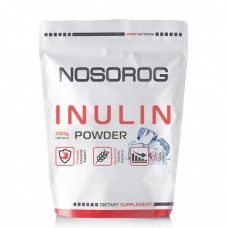Price: 0 uah
CheckoutWhat are prebiotics?
Prebiotics are special plant fibers that help healthy bacteria grow in your gut. This makes your digestive system work better.

Prebiotics vs. Probiotics
Both prebiotics and probiotics are beneficial for the gut, but they help in different ways.
Prebiotics are a food source for the healthy bacteria in your gut. They are carbohydrates that your body cannot digest. Therefore, they reach the lower parts of the digestive tract where they act as food, helping healthy bacteria grow.
Probiotics are live yeasts and beneficial bacteria living in your body and beneficial for your digestive system. You can take probiotics as supplements or get them from food.
Prebiotics function as a food source for the microorganisms in your gut, and they must bypass digestion and reach the colon. There, microorganisms metabolize and ferment prebiotics to survive. This process of metabolism and fermentation is beneficial for your gut health as it creates many other byproducts that help you in various ways.
When prebiotics are broken down by microorganisms in your gut, various short-chain fatty acids are produced depending on the type of prebiotic. As a result, these short-chain fatty acids do several things, such as providing energy to the cells of the colon, helping to produce mucus, promoting inflammation reduction, and boosting immunity.
Different microorganisms can use different prebiotics, so not every prebiotic has the same effect.
Benefits of Prebiotics
The benefits of prebiotics are wide-ranging. Much research is still being conducted to determine how sources of food for gut microbiota work, but here are a few things that we know prebiotics do:
- Help regulate stool.
- Produce neurotransmitters that switch between the gut and the brain, causing mood changes and other processes.
- Stimulate the body to produce hormones that affect appetite, appetite suppression, etc.
- Help your bones mineralize and absorb calcium and phosphorus, which can improve bone density.
- Enhance the function of your immune system.
- Strengthen the body's anti-inflammatory response.
- Increase the production of good bacteria and reduce the amount of bad bacteria causing disease.
Prebiotic Foods
Prebiotic foods typically contain many specific types of fiber known as fermentable soluble fiber. How you prepare your food also determines how much prebiotics are available, as your food changes composition depending on how you cook it. Although there are many types of prebiotics, the three most common are found in resistant starches, inulin, and pectin.
Resistant Starches
Like fiber, resistant starches resist digestion and ultimately become the main food source for microorganisms in the colon. When resistant starches are broken down, they often produce butyrate, which helps with water and electrolyte absorption, immune system functionality, and inflammation prevention.
Take, for example, potatoes. When you bake a potato, the starch is less resistant, but if you boil it and let it cool, the white starchy film that forms is the resistant starch you need. Resistant starches can be found in:
- Cooked and cooled potatoes.
- Green bananas.
- Barley.
- Oats.
- Rice.
- Beans.
- Legumes.
Inulin
Inulin is a prebiotic fiber found in many plants. This prebiotic can help you feel full for longer, aiding in overeating and stool help. It can also help lower LDL cholesterol levels, stabilize blood sugar levels, and increase and maintain beneficial bacteria in the gut. It can also help reduce the risk of colon cancer. While you can take inulin as a supplement in the form of chewable tablets, tablets, capsules, and powder, high-inulin products usually have additional benefits, providing antioxidants and other vitamins. Some of these products include:
- Asparagus.
- Burdock root.
- Chicory root.
- Dandelion greens.
- Garlic.
- Jerusalem artichoke.
- Leeks.
- Onions.
- Soy.
- Wild yam.
Pectin
Pectin is found in many fruits, especially in the flesh of raw apples. Pectin is a type of gel-like starch often used to make jams and jellies. This starch has antioxidant and anti-tumor properties. It can also strengthen the skin cells of the intestinal mucosa, reduce the ability of bacterial diseases to take root, and improve the diversity of microorganisms in your gut. High-pectin foods include:
- Apples.
- Apricots.
- Carrots.
- Green beans.
- Peaches.
- Raspberries.
- Tomatoes.
- Potatoes.
When to Take Prebiotics (and When Not to)
So, where and how should you start consuming prebiotics? Dr. Crashe (Gastrointestinal Disease Researcher and Registered Dietitian) suggests introducing them into your diet slowly.
"Don't eat them at night," she advises. "When they start working and wake up your microbiota, it will start producing more gases, so you don't want the opposite effect of feeling very bloated or gassy. It should be a gradual introduction into your diet."
And since your body operates on a circadian rhythm, the microorganisms in your gut are more active during the day, so don't consume prebiotics too late in the evening.


